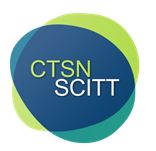The Cam Academy Trust strongly supports the training of new teachers to become qualified members of the teaching profession. It does this through its extensive and significant role as a leading part of the Cambridge Teaching Schools Network, incorporating Essex Primary SCITT (EPS). Full details about this are on the CTSN website.

CTSN SCITT is an initial teacher training provider which works with over 80 schools in the region, including those in the Cam Academy Trust, to train over 120 trainee teachers in one of 17 secondary subjects or primary education each year. Between over 80% of which go on to teach within the region. It began teacher training under the CTSN banner in 2010.
As a school-based provider of initial teacher training, the CTSN SCITT is very much grounded in the life of its local schools. Our tutors on the course are expert, practising teachers and, from the beginning of the course, trainees will spend four days a week in school and attend Core Training on the remaining, either in Cambridge West Suffolk or Essex.NB: Part-time trainees spend 1.5 days in school in their first year plus core traiing and 2.5 days in school during their second year.
It offers both full-time and part-time non-salaried courses which lead to the awards of Qualified Teacher Status (QTS) plus and option to complete a PGCE (with the Anglia Ruskin University). It also offers salaried courses which lead to Qualified Teacher Status (QTS) only.
“You will create lives as teachers. You will build up, develop and educate young people and you will create their lives. What a wonderful privilege and responsibility that is…
“What is abundantly clear and rightly acknowledged is that schools really do matter a very great deal for our society and especially for all young people in our country who are fortunate to be able to attend them. What is even clearer is quite how important and significant a job a teacher has.” Stephen Munday, Chief Executive of The Cam Academy Trust and Accounting Officer for CTSN SCITT.
Whether you are an undergraduate seeking your first career or looking to change careers, applying to become a teacher may seem daunting. Therefore, CTSN SCITT is committed to supporting potential candidates. As well as hosting a series of Train to Teach information events and it helps applicants through the process, and then supports them during their training and into their first teaching posts. Training to teach with CTSN is more than just a one-year commitment. If you have any questions email: scitt@catrust.co.uk to arrange a conversation with one of our recruitment team.
A good place to start for general information on becoming a teacher is the DfE Get into Teaching website. This offers good general information, from how to set up a school experience visits, to seeing what primary/secondary school life is like, to checking if you have the correct qualifications to apply for a teacher training course, to how to apply for a place on a teacher training course.
The CTSN SCITT’s website also has a wealth of information including blogs for previous CTSN trainees, its routes into teaching, eligibility, selection process and information events.
If you would like to speak directly to a CTSN Recruitment Lead for more information you could either attend one of the recruitment events or email: scitt@catrust.co.uk to arrange a conversation.
The DfE also offers a useful tailored advice service which provides you with personalised advice from a team of telephone agents who can talk you through training options, the application process and your next steps. You can register for this here.
How to apply
To apply for teacher training courses in England, you should use Apply for teacher training, a new gov.uk service.
When you apply you’ll need to give details about:
You can also share whether you need any adjustments during the application process or on the course - for example, if you’re disabled.
You’ll be encouraged to declare any potential safeguarding issues such as criminal convictions.
Your personal statement can be up to 1000 words. The DfE states that 90% of successful candidates write 500 words or more.
You could include:
Teacher training providers want to see your passion and that you understand the bigger picture of teaching.
Make sure you check your spelling and grammar in your application. You want to make the best possible impression.
Teacher training providers need to check that you’re a suitable candidate for teacher training. One way that they do this is by asking you to provide references when you apply.
This is mainly for safeguarding reasons to make sure you can work with children.
You need to provide at least two references, but you can provide more.
Your references for teacher training need to be from named individuals.
They’ll need to confirm how they know you and if they know any reason why you should not work with children.
You should not ask a family member, partner or friend for a reference.
Make sure whoever you ask to provide a reference can give a detailed response of up to 500 words about how they know you. Sometimes applications can be held up because references are too short.
Types of reference
There are four types of references you can provide:
If you’re still studying or graduated in the last five years, one of your references should be an academic reference (your second reference can be any of the other four types).
If you already work in a school, one of your references should be from your headteacher (your second reference can be any of the other four types).
If you graduated more than five years ago and do not work in a school, you can choose any combination of references.
Make sure you provide a professional email address, not a personal email address for each reference.